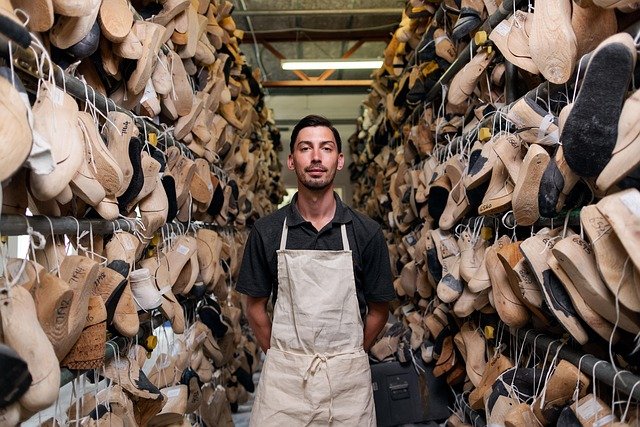The Resurgence of Handcrafted Footwear: A Step Towards Individuality
In a world dominated by mass-produced fashion, a quiet revolution is taking place in the realm of footwear. Handcrafted shoes are making a comeback, captivating fashion enthusiasts and conscious consumers alike. This revival isn't just about nostalgia; it's a testament to the enduring appeal of artisanal craftsmanship and the growing desire for unique, personalized style. Let's explore how this trend is reshaping the way we think about and shop for shoes.

The Art of Shoemaking: A Rich History
The craft of shoemaking has a storied past that stretches back thousands of years. Ancient civilizations recognized the importance of protecting feet, developing techniques to create footwear from available materials. In medieval Europe, shoemakers, or cordwainers, formed guilds to preserve and pass down their skills. These artisans were revered for their ability to create custom-fit shoes that were both functional and beautiful.
As industrialization swept through the 19th and 20th centuries, mass production techniques began to dominate the shoe industry. While this made shoes more accessible and affordable, it also led to a decline in traditional shoemaking methods. However, the art never completely disappeared, with pockets of artisans continuing to practice their craft, often catering to high-end clientele or niche markets.
The Modern Renaissance of Handmade Shoes
Today, we’re witnessing a revival of interest in handcrafted footwear. This renaissance is driven by several factors:
Desire for Quality: Consumers are increasingly valuing quality over quantity, seeking out shoes that will last for years rather than seasons.
Emphasis on Sustainability: Handmade shoes often use sustainable materials and production methods, appealing to environmentally conscious shoppers.
Appreciation for Craftsmanship: There’s a growing recognition of the skill and artistry involved in creating shoes by hand.
Pursuit of Uniqueness: In an era of mass production, handmade shoes offer a way to express individual style and stand out from the crowd.
The Process: From Last to Lasting Impression
The creation of a handmade shoe is a meticulous process that can take days or even weeks. It begins with selecting the finest materials - supple leathers, durable soles, and quality thread. The shoemaker then crafts a last, a foot-shaped form around which the shoe is built. This is where the magic of customization happens, as the last can be adjusted to accommodate the unique contours of an individual’s foot.
Next comes the cutting and stitching of the upper, a process that requires precision and an eye for detail. The sole is then attached, often using traditional techniques like hand-welting. Finally, the shoe is finished and polished, transforming raw materials into a wearable work of art.
The Appeal of Bespoke Footwear
Bespoke shoes take handcrafting to the next level, offering a truly personalized experience. Clients work directly with master shoemakers to design shoes that perfectly fit their feet and reflect their personal style. This process often involves multiple fittings and consultations, resulting in shoes that are not just comfortable but also uniquely tailored to the wearer’s preferences.
The appeal of bespoke shoes goes beyond fit and style. For many, it’s about participating in a time-honored tradition and owning a piece of wearable art. It’s a luxury experience that connects the wearer to the craftsperson in a way that’s rare in today’s fast-fashion world.
Shopping for Handcrafted Shoes: What to Look For
When shopping for handcrafted shoes, there are several key factors to consider:
Material Quality: Look for shoes made from high-grade, full-grain leathers or other premium materials.
Construction Methods: Hand-welted or Blake-stitched shoes tend to be more durable and easier to resole than glued constructions.
Customization Options: Many handmade shoe brands offer made-to-order services, allowing you to choose your preferred leather, color, and sole options.
Maker’s Reputation: Research the shoemaker or brand’s history and customer reviews to ensure you’re investing in quality craftsmanship.
Comfort and Fit: Remember that handmade shoes often require a breaking-in period but should ultimately provide superior comfort and support.
Stepping Into the World of Handcrafted Footwear
-
Invest in a shoe care kit to maintain the quality of your handcrafted shoes
-
Consider starting with a versatile style like a leather oxford or loafer
-
Visit local craft fairs or artisan markets to discover independent shoemakers
-
Be patient with the process - custom shoes can take weeks or months to create
-
Don’t be afraid to mix handcrafted shoes with more casual outfits for a unique look
As we step into the future of fashion, the resurgence of handcrafted footwear reminds us of the value of tradition, quality, and personal expression. By choosing handmade shoes, we’re not just making a fashion statement; we’re supporting skilled artisans, embracing sustainable practices, and investing in pieces that will stand the test of time. In a world of fast fashion, handcrafted shoes offer a chance to slow down, appreciate the art of shoemaking, and walk through life in style and comfort that’s truly our own.





